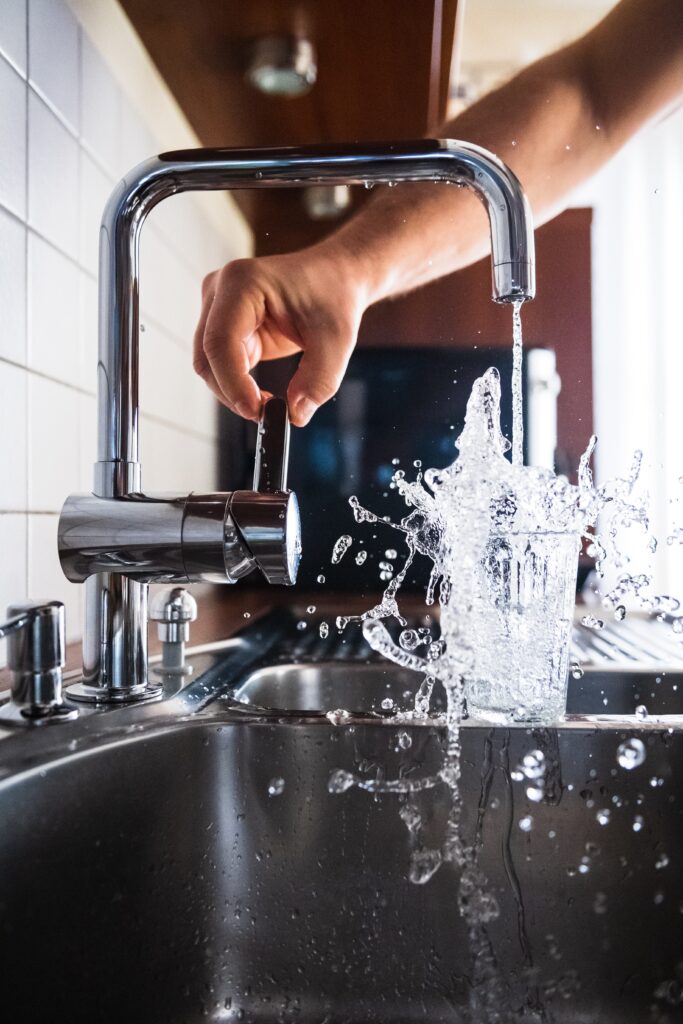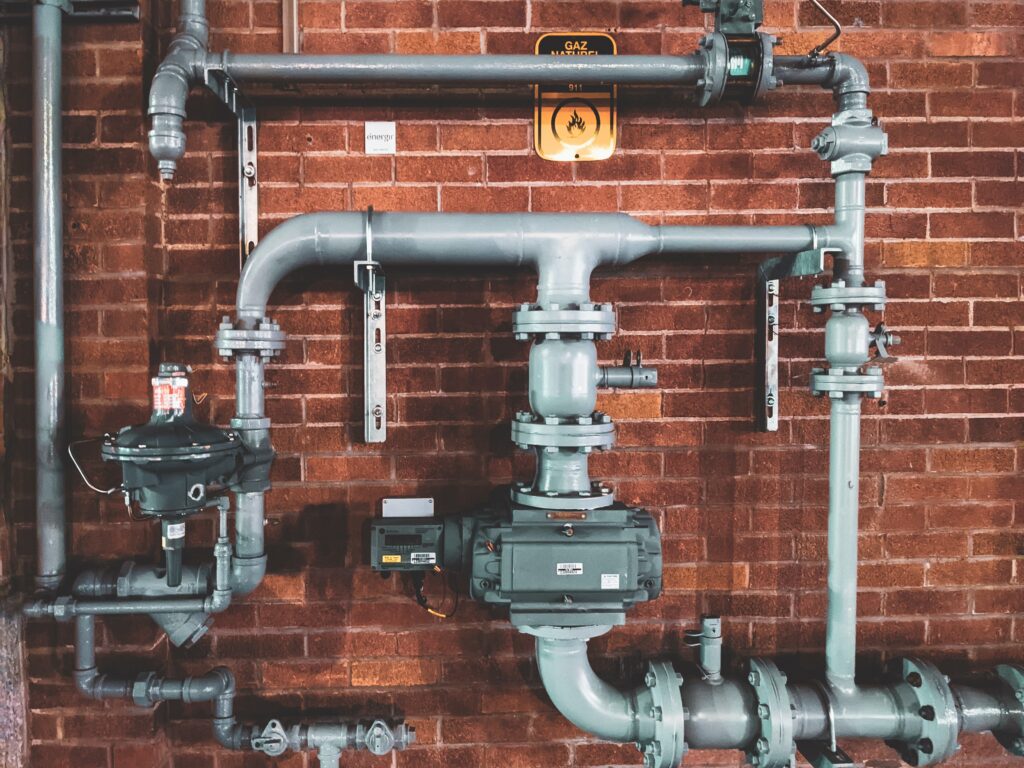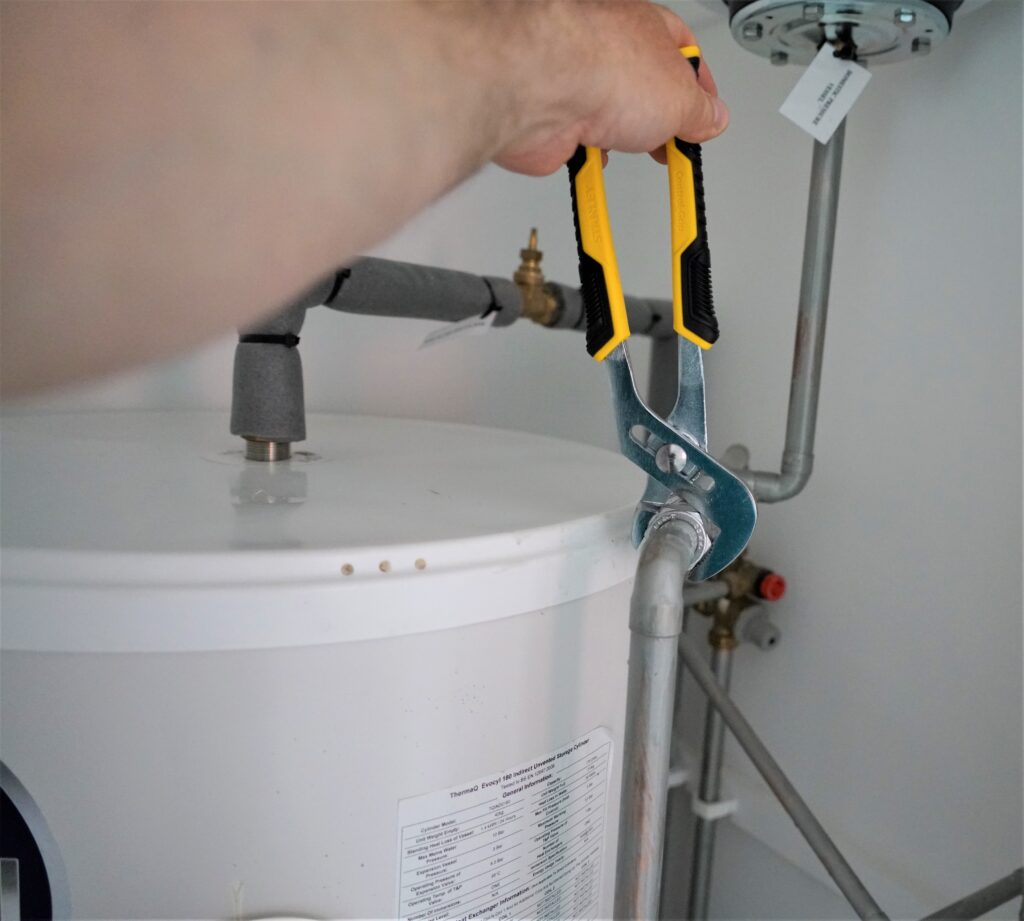Have you ever wondered what causes a dripping faucet? If you’re considering doing some plumbing work on your own, it’s important to understand the reasons behind this common household nuisance. In this article, we will provide you with the essential information about what causes a dripping faucet, helping you troubleshoot and address the issue effectively.

This image is property of images.unsplash.com.
Common Causes of a Dripping Faucet
Worn out Faucet Washer
One of the most common causes of a dripping faucet is a worn-out faucet washer. Over time, the constant opening and closing of the faucet handle can cause the washer to deteriorate and lose its effectiveness, resulting in a leak. This is especially common in older faucets that have not been replaced or maintained regularly. If you notice a slow drip coming from your faucet, the washer may need to be replaced.
Broken Valve Seat
Another common cause of a dripping faucet is a broken valve seat. The valve seat is the connection between the faucet and the spout, and if it becomes damaged or cracked, water can leak out. This can occur due to wear and tear over time or excessive force applied to the faucet handle. If you suspect a broken valve seat, it is best to consult a professional plumber for repair or replacement.
Corroded or Blocked Valve Seat
In addition to a broken valve seat, a corroded or blocked valve seat can also lead to a dripping faucet. Over time, mineral deposits from hard water can accumulate and cause corrosion or blockages in the valve seat. This can prevent the faucet from fully sealing, resulting in leaks. Regular cleaning and maintenance can help prevent this issue, but if a build-up has already occurred, it may require the expertise of a plumber to remove the corrosion or blockage.
Faulty O-ring
The O-ring is a small rubber ring located inside the faucet handle that helps create a watertight seal when the faucet is closed. If the O-ring becomes worn or damaged, it can cause leaks. This is a common issue in cartridge faucets, where the O-ring serves as a crucial component of the cartridge mechanism. Replacing the O-ring can often solve the problem of a dripping faucet in these cases.
Loose or Worn-out Washer Screw
The washer screw, also known as the packing nut or bonnet nut, secures the faucet handle to the valve stem. If the washer screw becomes loose or worn-out, it can cause water to leak from the handle area. As a simple fix, tightening the washer screw with a wrench can often stop the dripping. However, if the screw is stripped or damaged, it may need to be replaced.
High Water Pressure
High water pressure can put excessive strain on your plumbing systems, including faucets. If the water pressure in your home is too high, it can cause faucets to drip. The constant pressure can wear down the internal components, leading to leaks. Installing a pressure regulator can help regulate the water pressure and prevent future dripping faucets.
Damaged Cartridge
Cartridge faucets rely on a movable cartridge assembly to control the flow of water. If the cartridge becomes damaged or worn-out, it can cause leaks. This is more common in cartridge faucets than traditional compression faucets. Replacing the cartridge can often resolve a dripping faucet issue with these types of faucets.
Leaking Pipe or Connection
Sometimes, the problem may not lie with the faucet itself but with a leaking pipe or connection behind the wall. A small leak in a pipe or a loose connection can cause water to drip down into the faucet, giving the illusion of a dripping faucet. It is important to thoroughly inspect the pipes and connections to rule out this potential cause.
Improper Installation
An improperly installed faucet can also lead to leaks and dripping. If the faucet was not correctly installed or if the connections were not properly sealed, water may seep out. It is essential to follow the manufacturer’s instructions carefully or consult a professional plumber for correct installation to avoid dripping faucets.
Defective Faucet
Lastly, a defective faucet may be the root cause of a dripping faucet. In some cases, faucets may have manufacturing defects that cause leaks and drips. If you have tried all the previous troubleshooting steps and the faucet still drips, it may be worth considering replacing the faucet entirely to ensure a proper fix.
How to Fix a Dripping Faucet
Replacing the Faucet Washer
To fix a dripping faucet caused by a worn-out washer, you will need to disassemble the faucet and remove the old washer. Turn off the water supply to the faucet and close the drain to prevent any small components from falling down. Remove the handle, usually held in place with a screw, and locate the washer beneath it. Replace the old washer with a new one of the same size and reassemble the faucet. Turn the water supply back on and check if the dripping has stopped. If not, move on to the next potential cause.
Repairing the Valve Seat
Repairing a broken valve seat can be a more complex task and may require professional assistance. The valve seat is located deep within the faucet body and may involve removing the entire assembly to access it. Depending on the extent of the damage, the valve seat may need to be repaired using specialized tools or replaced altogether.
Cleaning or Replacing the Valve Seat
If the valve seat is corroded or blocked, it can often be cleaned or replaced to fix the dripping faucet. Using a valve seat wrench, carefully remove the valve seat and inspect it for any build-up or damage. Clean the seat using a brush or cloth and restore it to its original condition. If the corrosion is severe or if the valve seat is too damaged, it may be necessary to replace it with a new one.
Replacing the O-ring
To replace a faulty O-ring, start by turning off the water supply and closing the drain. Remove the handle and locate the O-ring on the valve stem. Gently pry off the old O-ring and replace it with a new one of the correct size. Ensure that the O-ring is properly seated before reassembling the faucet. Turn the water supply back on and test if the dripping has been resolved.
Tightening or Replacing the Washer Screw
If the washer screw is loose or worn-out, it can often be tightened to fix a dripping faucet. Use a wrench to carefully tighten the washer screw until it is snug but not overly tightened. If the screw is stripped or damaged, it may need to be replaced with a new one of the same size and type.
Installing a Pressure Regulator
In cases where high water pressure is the cause of the dripping faucet, installing a pressure regulator can help regulate the water flow. A pressure regulator can be installed near the main water supply line to ensure that the water pressure remains within safe levels. Consult a professional plumber for assistance with selecting and installing the appropriate pressure regulator for your home.
Replacing the Cartridge
For cartridge faucets, a dripping faucet can often be fixed by replacing the cartridge. Start by turning off the water supply and closing the drain. Remove the handle and any retaining clips or screws that hold the cartridge in place. Carefully remove the old cartridge and replace it with a new one of the same type. Reassemble the faucet and test if the dripping has been resolved.
Fixing Leaking Pipes or Connections
If the cause of the dripping faucet is a leaking pipe or connection, it is essential to address the issue promptly. Turn off the water supply and inspect the pipes and connections for any signs of leaks. Tighten any loose connections and repair or replace any damaged pipes as necessary. It may be beneficial to consult a professional plumber for assistance with more complex pipe repairs.
Reinstalling the Faucet Correctly
If the faucet was improperly installed, it may require reinstallation to resolve the dripping issue. Follow the manufacturer’s instructions carefully or consider consulting a professional plumber for correct installation. Ensure that all connections are properly sealed and tightened to prevent any leaks. Test the faucet after reinstalling to check if the dripping has been fixed.
Replacing the Defective Faucet
If none of the previous steps have resolved the dripping faucet, it may be necessary to replace the faucet entirely. This is particularly true if the faucet is old, worn-out, or has manufacturing defects. Select a new faucet of the appropriate type and style, and follow the installation instructions to ensure a proper fit. With a new faucet in place, the dripping problem should be resolved.

This image is property of images.unsplash.com.
Other Factors to Consider
While the causes mentioned above are the most common reasons for a dripping faucet, there are other factors to consider that may contribute to the issue. These factors can include:
Hard Water Buildup
Hard water, which contains high levels of minerals like calcium and magnesium, can lead to mineral deposits inside faucets. These deposits can accumulate over time and cause blockages or corrosion, resulting in leaks. Regular descaling and cleaning of faucets can help prevent hard water buildup and reduce the likelihood of dripping faucets.
Temperature Changes
Drastic temperature changes can put stress on plumbing systems and cause expansion or contraction of the faucet components. This can lead to gaps or cracks that allow water to leak out. Ensuring that your plumbing system is properly insulated and protected from extreme temperature fluctuations can help prevent dripping faucets.
Deteriorating Plumbing System
An aging or deteriorating plumbing system can become more prone to leaks and dripping faucets. Over time, pipes can corrode, connections can loosen, and components can wear down, all contributing to leaks. Regular inspections and maintenance of your plumbing system can help identify and address any potential issues before they escalate into more significant problems.
Old Age of the Faucet
The age of the faucet itself can be a contributing factor to a dripping faucet. Over time, the internal components of the faucet can degrade or weaken, leading to leaks. If your faucet is old and has been exhibiting signs of wear and tear, it may be time to consider replacing it to prevent future dripping.
Excessive Use
Faucets that are used frequently or for extended periods of time may be more susceptible to dripping. The constant wear and tear can cause the internal components to degrade faster. If possible, try to minimize excessive use of faucets or consider upgrading to more durable or commercial-grade faucets that can better withstand heavy usage.
Improper Maintenance
Lack of proper maintenance can also contribute to a dripping faucet. Regular cleaning, inspections, and addressing minor issues promptly can help prevent potential leaks. Neglecting to maintain faucets and plumbing systems can lead to more significant problems down the line, resulting in dripping faucets.
Environmental Factors
Environmental factors such as changes in water pressure, temperature, or humidity can affect the performance of faucets. Extreme weather conditions or exposure to harsh chemicals can cause deterioration or damage to the faucet components. Taking steps to protect faucets from adverse environmental factors can help prevent dripping.
Water Quality Issues
Water quality problems, such as high levels of minerals or contaminants, can impact the performance of faucets and contribute to dripping. If your water supply has known water quality issues, consider installing water filters or treatment systems to improve the water quality and protect your faucets.
Plumbing Materials Used
The materials used in your plumbing system can influence the likelihood of dripping faucets. Low-quality or corroded materials may be more prone to leaks and deterioration. When installing or replacing faucets, use high-quality plumbing materials that are well-suited for your specific plumbing system to minimize the risk of dripping faucets.
Manufacturer Defects
In rare cases, manufacturer defects can cause faucets to drip. This can include faulty components, poor craftsmanship, or design flaws. If you suspect a manufacturer defect, contact the manufacturer or dealer to determine if there are any known issues with the specific faucet model and if any remedies are available.

This image is property of images.unsplash.com.
Preventative Measures to Avoid Dripping Faucets
While some causes of dripping faucets are out of your control, there are preventative measures you can take to minimize the likelihood of experiencing this common plumbing issue. By following these preventative tips, you can help maintain the functionality and efficiency of your faucets:
Regular Maintenance and Inspections
Regularly inspecting your faucets for any signs of wear, leaks, or damage can help identify and address potential issues before they escalate into dripping faucets. Additionally, performing routine maintenance tasks, such as cleaning or replacing washers, O-rings, and cartridges, can significantly prolong the lifespan of your faucets.
Proper Installation
Ensure that your faucets are properly installed according to the manufacturer’s instructions or consult a professional plumber for correct installation. Loose or incorrect installation can lead to leaks and dripping faucets, so it is crucial to pay attention to this detail.
Using Quality Plumbing Materials
Investing in high-quality plumbing materials when installing or replacing faucets can help prevent future dripping. Opting for durable materials that are resistant to corrosion and wear can ensure the longevity and performance of your faucets.
Monitoring Water Pressure
Regularly monitor the water pressure in your home to ensure that it remains within safe levels. High water pressure can put unnecessary strain on your plumbing system, including faucets, leading to leaks and dripping. Installing a pressure regulator or contacting your water utility company to adjust the pressure can help maintain a safe and consistent water flow.
Avoiding Excessive Force
Be mindful of how much force you apply when turning faucets on or off. Excessive force can cause wear and tear on the internal components, leading to leaks over time. Use a gentle touch when operating your faucets to promote their longevity.
Addressing Plumbing Issues Promptly
If you notice any plumbing issues or signs of leaks, address them promptly. Ignoring small leaks or signs of dripping can lead to more significant problems down the line. Contact a professional plumber to inspect and repair any plumbing issues before they escalate into more costly repairs.
Installing Water Softening Systems
If you have hard water in your area, consider installing a water softening system to reduce mineral deposits and prevent hard water buildup in your faucets. This can help extend the lifespan of your faucets and reduce the occurrence of dripping.
Conserving Water
Practicing water conservation habits can also contribute to preventing dripping faucets. Avoid letting faucets drip unnecessarily and fix any leaks promptly. Simple habits like turning off the faucet while brushing your teeth or lathering your hands can make a significant difference in reducing water waste and potential dripping.
Replacing Aging Faucets
If your faucets are old and showing signs of wear and tear, consider replacing them before they start dripping. Upgrading to newer, more efficient faucets can not only prevent leaks but also enhance the overall aesthetic and functionality of your kitchen or bathroom.
Educating Household Members on Proper Faucet Use
Proper faucet use can also help prevent dripping. Educate all household members on using faucets responsibly, avoiding excessive force, and promptly reporting any signs of leaks or dripping. By fostering a culture of responsible faucet usage, you can collectively contribute to preventing dripping faucets.
By understanding the common causes of dripping faucets, learning how to fix them, and implementing preventive measures, you can effectively address this common plumbing issue. With proper maintenance and care, your faucets can provide consistent, leak-free performance for years to come.
